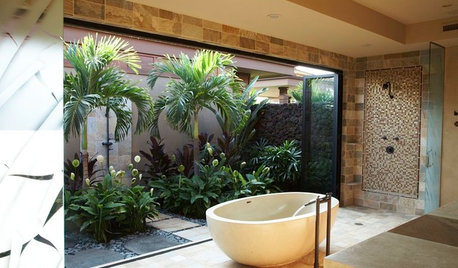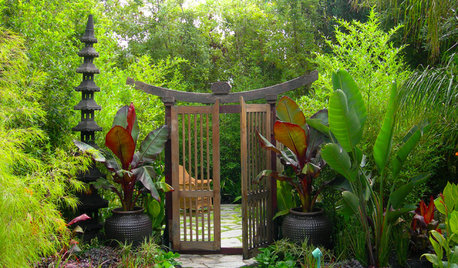Air-layering ficus Benjamina
rina_Ontario,Canada 5a
11 years ago
Related Stories

HOUSEPLANTS10 Top Plants to Grow Indoors
Brighten a room and clean the air with a houseplant that cascades artfully, stretches toward the ceiling or looks great on a wall
Full Story

DECORATING GUIDESThe Dumbest Decorating Decisions I’ve Ever Made
Caution: Do not try these at home
Full Story
HOUSEPLANTS8 Essentials for Healthy Indoor Plants
Houseplants add so much to our homes — and can thrive when grown in the right conditions. Keep these tips in mind
Full Story
DECORATING GUIDESDitch the Rules but Keep Some Tools
Be fearless, but follow some basic decorating strategies to achieve the best results
Full Story
HOUSEPLANTS8 Houseplants You Can't Kill
They're forgiving and let you forget. Houseplants don't get any easier than this
Full Story
DECORATING GUIDES12 Smart Ideas for Decorating Empty Corners
Fill a neglected corner with something useful, attractive or both, using these dozen thoughtful decorating strategies
Full Story
CONTAINER GARDENS10 Ways to Take Containers Beyond the Patio
Enliven your landscape with pots and containers
Full Story
TREESHow to Use Trees Inside
Bring nature close by integrating the beauty of trunks and trees — even smaller leafy trees — into your home
Full Story
HOUSEPLANTSHow to Create an Indoor Landscape
Apply principles and elements of design to help your indoor garden flourish
Full Story








tapla (mid-Michigan, USDA z5b-6a)
rina_Ontario,Canada 5aOriginal Author
Related Professionals
Oconomowoc Landscape Architects & Landscape Designers · Piqua Landscape Architects & Landscape Designers · Roosevelt Landscape Architects & Landscape Designers · West Chester Landscape Architects & Landscape Designers · Zion Landscape Architects & Landscape Designers · Maple Heights Landscape Architects & Landscape Designers · White Oak Landscape Architects & Landscape Designers · Fort Atkinson Landscape Contractors · La Mirada Landscape Contractors · Mendota Heights Landscape Contractors · Middleton Landscape Contractors · Soddy Daisy Landscape Contractors · Casselberry Landscape Contractors · Mount Vernon Interior Designers & Decorators · Ashwaubenon Interior Designers & Decoratorsamber_m
tapla (mid-Michigan, USDA z5b-6a)
rina_Ontario,Canada 5aOriginal Author
rina_Ontario,Canada 5aOriginal Author
tapla (mid-Michigan, USDA z5b-6a)
rina_Ontario,Canada 5aOriginal Author
tapla (mid-Michigan, USDA z5b-6a)